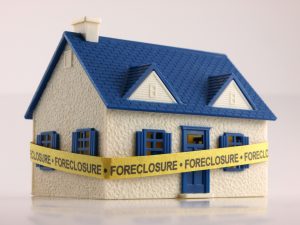
While federal foreclosure moratoriums imposed during the COVID-19 pandemic have been lifted, several states have extended their foreclosure moratoriums with some not to expire until the end of this year (2022). Those moratoriums continue to impact housing in those states where they are still in place. As a result, the health of real estate markets in those areas impacted by foreclosure moratoriums may be more difficult to measure and certainly do not reflect the potential health of the market. Below are a number of ways foreclosure moratoriums in 2022 continue to impact the housing market in the U.S.
Which States Extended Their Foreclosure Moratoriums?
When we discuss housing moratoriums related to COVID-19, there are two moratoriums to consider. There was a foreclosure moratorium that prevented mortgage lending institutions from foreclosing on homes where homeowners were behind on mortgage payments due to pandemic restrictions. Separately, there was an eviction moratorium that prevented landlords from evicting tenants who were behind on their rent. Both moratoriums ended in 2021.
There were some states, however, that extended one or both moratoriums.
The State of Eviction Moratoriums in 2022
The following states still have or had eviction moratoriums as of this year:
- In Massachusetts, landlords can’t evict tenants who have pending applications for rental assistance. That moratorium is in place until March 31, 2023.
- Minnesota’s eviction moratorium ended on June 1, 2022. Even if a tenant has a pending rental assistance application, they can’t be evicted as of that date.
- The eviction moratorium in Nevada ended in April this year.
- New Jersey ended its eviction moratorium on New Year’s Day.
- New Mexico had an eviction moratorium in place until March of this year.
- New York’s eviction moratorium ended on January 15.
- Oregon extended its eviction moratorium until the end of June 2022. If tenants apply for rental assistance and provide documentation to their landlords before that date, they can’t be evicted before September 30, 2022, or until their rental assistance application is canceled or denied.
- In Washington, D.C., there is a permanent ban on evictions for tenants who owe less than $600 in rent. Otherwise, the pandemic-related eviction moratorium has been lifted as of February 2022.
The State of Foreclosure Moratoriums in 2022
Just as some states have extended eviction moratoriums into 2022, a few states have extended foreclosure moratoriums into this year.
- The District of Columbia extended its foreclosure moratorium through June 30, 2022. If a homeowner applies for Homeowner Assistance Funds before then, they’ll have a safe harbor from foreclosure until September 30, 2022.
- New York’s foreclosure moratorium ended on January 15, 2022.
- Vermont’s foreclosure moratorium came to an end on May 31, 2022.
Considering that all state foreclosure moratoriums have now expired, how has that impacted the foreclosure rate? What effect will it have going into 2023?
The U.S. Foreclosure and Eviction Rates in 2022
One would expect that the lifting of foreclosure moratoriums in 2022 in all states would lead to an increase in foreclosure activity. That’s precisely what happened.
According to ATTOM, first-quarter foreclosures increased 39 percent from the previous quarter and 132 percent from the first quarter of 2021. A total of 78,271 foreclosures were filed in Q1 2022.
In March 2022, foreclosures were up 29 percent from the previous month and up 181 percent from March 2021. A total of 33,333 foreclosures were filed in March 2022. It was the 11th consecutive month where foreclosures were up year-over-year.
Foreclosure starts were up 67 percent in Q1 over Q4 2021 and up 188 percent from last year. The states with the highest foreclosure start counts include California, Florida, Texas, Illinois, and Ohio. In those states, a total of 21,404 foreclosure starts occurred in Q1 2022. The major metro areas with the most foreclosures last quarter were Chicago, New York, Los Angeles, Houston, and Philadelphia.
There has been a similar trajectory in evictions in 2022.
According to Eviction Lab, a real-time eviction tracking service, there were 5,987 evictions filed last week in six states and 31 cities. Those states are Indiana, Connecticut, Missouri, Minnesota, Delaware, and New Mexico. Indiana led with 610 evictions last week. Among the cities being tracked, Las Vegas led in evictions with 914 last week. Houston had 855 and Dallas had 513. Columbus, Ohio, ranked fourth, had 397, and Fort Worth, Texas had 365.
247 Wall Street ranks the states with the most renters likely to be evicted as of March 2022. Ranked last on the list are Delaware, Connecticut, and Hawaii. The five states with the most renters likely to be evicted are Maine, Montana, Alabama, Kentucky, and Pennsylvania.
After New York’s eviction moratorium ended in January, the state saw its evictions increase.
Pew Charitable Trusts report that evictions are up across the board, and they’re at pre-pandemic levels. In Houston, landlords filed for 5,400 evictions in January of this year. That’s 1,000 more than the monthly average before the pandemic. In Columbus, Ohio, evictions were 21 percent higher in December last year than in the same month in 2012, 2013, and 2015. By contrast, in Tampa, eviction filings were down 24 percent.
According to the National Low Income Housing Coalition, 2.7 million tenants receive eviction notifications every year. That obviously was not the case during the pandemic when eviction moratoriums were in place, but now that they’re lifted, we should expect to see the number of eviction notices rise again by the end of this year.
What to Expect With Foreclosure and Eviction Rates Going Into 2023
It’s likely that foreclosure and eviction rates will continue to rise through the rest of this year and going into Q1 next year. Inflation is at a 40-year high, the war in Ukraine is putting pressure on global fuel prices and driving up prices at the pump, and rents are rising all over the U.S. These three economic pressures are making it more difficult for homeowners and renters, which means anyone who was struggling to pay their mortgage or their rent prior to the ending of the moratorium will have just as difficult a time now.
The bright side to the economic picture is that unemployment is at the same rate as it was prior to the pandemic. That’s little consolation, though, to the employed who are likely earning the same as they were in February 2020.
What this means for investors is an opportunity to acquire new properties at a discount. As foreclosures increase, investors with capital can swoop in to purchase these new properties entering the market in various ways. We should see an increase in REOs and investors specializing in pre-foreclosure properties will have a heyday. As for rental properties, as tenants get evicted and availability increases on rental units, that will allow landlords to raise the rents on those properties while increasing their revenues.
The outlook for real estate investing is still optimistic going into the second half of 2022.


